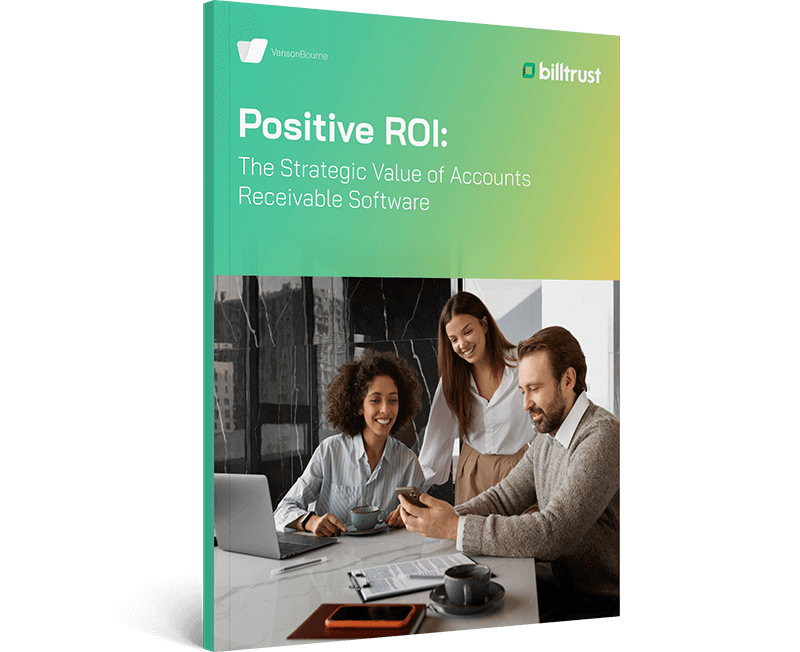Urgency is the name of the game in healthcare and life sciences – that is, until the payment is due. While researchers, pharmaceuticals, and medical suppliers move fast on the frontlines, finance teams are stuck waiting on payments, chasing down what’s owed, and sorting through disputes. Financial capital needs to move quickly in this industry to drive innovation, scale care delivery, and stay ahead of constant change.
This is easier said than done considering the unique complexities of accounts receivable in this industry. Research shows:
- On average, healthcare systems have 28% less cash on hand than they did just a few years ago.
- Biotech companies have been cutting jobs and lowering expenses in response to market volatility and budget cuts.
With the challenges only growing, accounts receivable (AR) automation has never mattered more in this industry.
Nearly 85% of healthcare organizations suffer financial losses due to outdated AR processes. That’s in stark comparison to the findings of a recent survey by independent research firm Vanson Bourne, in which 72% of companies in the healthcare and life sciences sector adopting AR automation report faster cash flow.

Those falling behind recognize the need for a comprehensive overhaul to improve their order-to-cash (O2C) process, while a high percentage of those digitally transforming with AR automation report measurable value (85%) and ROI (68%) from their investments.
How exactly is accounts receivable automation making the biggest impact in the healthcare and life sciences industry, and where is the untapped potential? Let’s dive into the key findings from this new research.
Top 3 Areas Where Accounts Receivable Automation Moves the Needle
In a sector where slow payments and fragmented billing are the norm, the Vanson Bourne study revealed three areas where healthcare and life sciences organizations see the most value from their accounts receivable automation.

1. Customer Experience: A Better Financial Journey
Billing is one of the most critical (and unfortunately, often frustrating) parts of the customer experience. Delayed payments can result in disruptions as well as downtime. AR automation improves service reliability, client relationships, and cash flow, creating a stronger financial foundation to continue delivering quality care. Overall, 35% of companies say AR automation enhances their customer experience.
2. Invoice Processing: Streamlined Delivery, Improved Cash Fow
Roughly 35% of organizations in this sector report faster invoice processing with AR automation, cutting Days Sales Outstanding (DSO) by an average of 12 days. That’s a major advantage for companies navigating complex financial pressures.
Healthcare and life sciences companies reduce DSO by 12 days on average with AR automation software.
3. Compliance and Governance: Smarter Systems, Stronger Safeguards
Just about 40% of organizations say accounts receivable automation software helps them stay ahead of regulatory demands and other compliance requirements by enforcing consistent, audit-ready processes across the entire AR lifecycle.
Focusing on these high-impact areas makes accounts receivable more strategic. This begs the question: if you do use AR software, is it just checking boxes or driving true strategic value?
How Health and Life Sciences Companies are Digitally Transforming Accounts Receivable
In an industry fueled by growth and innovation, CFOs are expected to step up as digital transformation leaders. Research results reveal three areas with the greatest potential.
Automation: Growing in Adoption; Still Room to Improve
More healthcare and life sciences companies are embracing automation to improve efficiency – which is great – but automation isn’t just about speeding up manual tasks. It’s about using your data to accelerate cash flow.
Automation is more than speeding up manual tasks. It’s about using your data to accelerate cash flow.
AI helps finance teams go beyond rule-based processes by tapping into data across systems, departments, and even external sources. Predictive analytics engines can surface early indicators of payment risk, spotlight payer trends, and more intelligently guide collection efforts. You can even match and reconcile unstructured data using machine learning paired with optical character recognition (OCR).
Vanson Bourne found that AI helps improve Days to Pay (DTP) by 7 days. In a data-heavy industry, AI turns billing complexity into an advantage for your bottom line.
Digital Invoicing: The Pendulum is Swinging
About 55% of health and life sciences companies have moved from print to digital invoicing, signaling change but not yet widespread adoption. This is a critical shift that leaders in this industry should be pursuing to streamline operations, lower processing costs, and reduce manual errors. It won’t be long before manual invoicing will be the equivalent of using a typewriter instead of a computer. In just a few years, we'll look back and wonder how we ever managed without digital invoicing.
55% of health and life sciences companies have moved from print to digital invoicing.
AI Integration: Huge Potential with GenAI and Agentic AI
Overall, 78% of companies report being satisfied with their AR software due to AI capabilities. Yet it must be asked: what flavor of AI? The latest development in AI is called Agentic AI. Built on the foundation of Generative AI (GenAI), it introduces a new class of virtual assistants – or “agents” – that operate completely on their own. Analysts see major disruption ahead, making this a critical focus for finance leaders across every industry.
If you're looking to better understand how Agentic AI works and what it means for finance, read our latest guide.
It may sound like a leap, but leading AR software providers are already integrating this technology directly into their platforms to drive smarter, faster workflows. Billtrust’s AI-powered AR platform is a prime example, evolving toward Agentic AI that enables autonomous, intelligent action.
The Research Makes It Clear
It’s time to move beyond manual AR processes and start automating for impact. AR automation doesn’t just speed up cash flow – it unlocks liquidity, reduces risk, and strengthens financial strategy. The most agile healthcare and life science companies will lead the way. Will that include yours?
Get more research findings about the value of AR automation.



